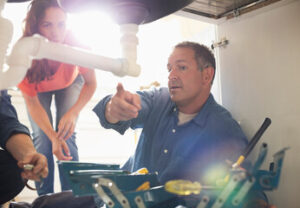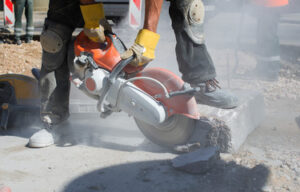When hiring Excavating Company look for one with a good reputation. This can be found by asking for a list of references from previous clients. It is also important to find out whether the company has the proper equipment for the job.

A business plan is necessary for starting an excavation company. It should include a market analysis and financial projections. It should also describe your services and highlight what sets you apart from your competitors.
Investing in high-quality excavation equipment can make all the difference. It is essential for completing projects on time and in budget, while also meeting safety standards. Depending on your business’s needs, you may need skid steer loaders, backhoes, or bulldozers. Considering that these machines are expensive, it is important to evaluate your options carefully. Consider the features and price tag of different models, as well as whether they have a warranty or after-sales support.
Professional excavation companies use specialized machinery to perform various tasks, such as trenching and grading. Moreover, they are well-versed in local construction laws and regulations. They follow strict safety protocols and know how to disconnect services like gas lines and electricity safely. In addition, they know how to manage drainage on build sites, a crucial aspect of any construction project.
Many excavation contractors work as subcontractors on large construction projects. They might be called in to dig a trench for foundations, pools, or utilities, and they might prepare a site for landscaping and concrete work. In other cases, they are hired directly by homeowners to demolish an old structure or improve a drainage system on their property.
Another important service that excavation companies provide is removing and disposing of waste materials. They can handle everything from hazardous waste to sediment, sludge, and debris. They use safe disposal methods that comply with environmental regulations. They also recycle as much as possible, to minimize the impact of their work on the environment.
In addition, excavation companies offer drainage solutions for both commercial and residential properties. Proper drainage is crucial to preventing soil erosion and other structural problems. They can install stormwater systems, septic tanks, and drains to reduce the amount of water that flows onto the property. They can also recommend other ways to improve drainage, such as introducing plants that help facilitate the absorption of rainwater into the ground. This will prevent damage to grass, trees, and buildings. In addition, it can help with the prevention of flooding and sewage leaks in basements.
Licensed and Insured
In order to begin operating an excavating company, the proper licensing and insurance policies are required. In addition, a significant amount of startup capital is needed to purchase equipment and cover initial operational costs. It may be necessary to explore small business loans, grants or venture funding to provide the financial boost that is needed.
Choosing a good name for your excavation company is also essential. This will allow you to establish a professional reputation and differentiate yourself from your competitors. A unique name is more likely to catch the attention of potential customers. Developing a website for your excavation company will allow you to showcase your services and build a strong online presence. You can use search engine optimization (SEO) techniques to improve your online visibility and attract more leads.
Most states require that excavation contractors have at least general liability insurance. Typically, this type of coverage protects your business against third-party property damage and personal bodily injury claims. For example, if your machinery damages someone’s property or causes them harm while visiting your jobsite, this type of policy could pay for their medical bills and compensation.
Other types of coverage that you may want to consider include commercial auto insurance, workers’ compensation and general property insurance. It’s a good idea to work with a licensed insurance agent who specializes in construction insurance to ensure that you have the right policies in place for your excavation business.
Having robust safety protocols and training for your employees is an excellent way to minimize damage, injuries and accidents on the jobsite. It is also important to conduct site assessments and locate underground utilities before beginning excavation. This will help prevent costly delays and ensure compliance with regulations, permits and safety standards.
In addition, you should make sure your equipment is properly maintained to reduce the risk of breakdowns or malfunctions. This will also help you save on maintenance costs and repair costs. Lastly, you should always contact your insurer if you purchase or sell any equipment to update your policy. Failure to do so could result in a claim denial or higher premiums in the future.
Experienced Staff
The team of professionals at an excavation company is as crucial as the equipment itself. Their experience and expertise allow them to provide a wide range of services to help clients get their projects off the ground successfully. This includes assessing site conditions, developing comprehensive plans, and completing work safely and efficiently. They are also able to quickly spot and resolve any issues, saving time and money in the long run.
In addition to preparing the site for construction, excavation contractors are responsible for trenching and laying out underground utilities such as water and electrical lines. This often involves a significant amount of digging and can present challenges, including maintaining the integrity of existing infrastructure. They can also be called upon to build roads, a task that requires precise engineering and coordination with paving crews.
Before launching an excavation business, it is important to gain hands-on experience working on construction sites. This can be accomplished by interning with established excavation companies and gaining exposure to various project complexities. It is also beneficial to acquire formal training in equipment operation, soil conditions and safety protocols.
In a world where mistakes can be expensive, the right people on the job make all the difference. A qualified excavation contractor can prevent problems before they arise and save a project from running into roadblocks that may delay progress or cost more than necessary.
A professional excavation company will provide quotes that outline costs, schedules and any specific terms or conditions that need to be met. They will also provide references from past clients that can speak to their quality of work, adherence to timelines and overall satisfaction with the service.
Once you have evaluated each excavating company’s credentials and experience, compare their quotes to determine which one best suits your project’s needs. Evaluate the level of communication and collaboration during the initial stages of requesting quotes, as well as their responsiveness to any questions or concerns you might have. Then, choose the company that satisfies your requirements and will exceed your expectations. You’ll be glad you did!
References
The right equipment, financial planning, and industry knowledge are essential to starting an excavation company. In addition, it is also important to develop a network and market your services to attract clients. You can also look for business grants, small business loans, or partnerships with investors to help you get started. Once you’ve established a strong network and built a reputation in the industry, you can start looking for excavation projects that fit your capabilities.
It is important to ask an excavating contractor for references and examples of their work. This will give you an idea of their quality and experience. You should also look for reviews and recommendations from previous customers to see how satisfied they were with the work done. It is also a good idea to check the company’s insurance coverage to ensure that any damages or accidents during the project are covered.
An experienced excavation contractor will be able to provide you with an accurate estimate upfront. They will take into account the type of soil and terrain and the varying conditions. They should be able to provide you with a price range and stick to it as much as possible throughout the project. They should also be able to give you an approximate timeline for completion of the job.
One of the best ways to find excavation contractors is to ask for references and referrals from previous clients. This will give you a good idea of their level of expertise and customer satisfaction. You can also check out their website to see photos of their past projects. If a contractor is willing to share their references with you, it is a good sign that they are honest and reputable.
Aside from finding a qualified excavation contractor, you should also consider implementing a construction billing software solution to make the process smoother. This way, you can track the project progress and prevent any disputes. Many excavation contractors are using Siteline, a construction billing software made specifically for subcontractors. This tool has helped them improve cash flow and reduce billing cycle lengths.


